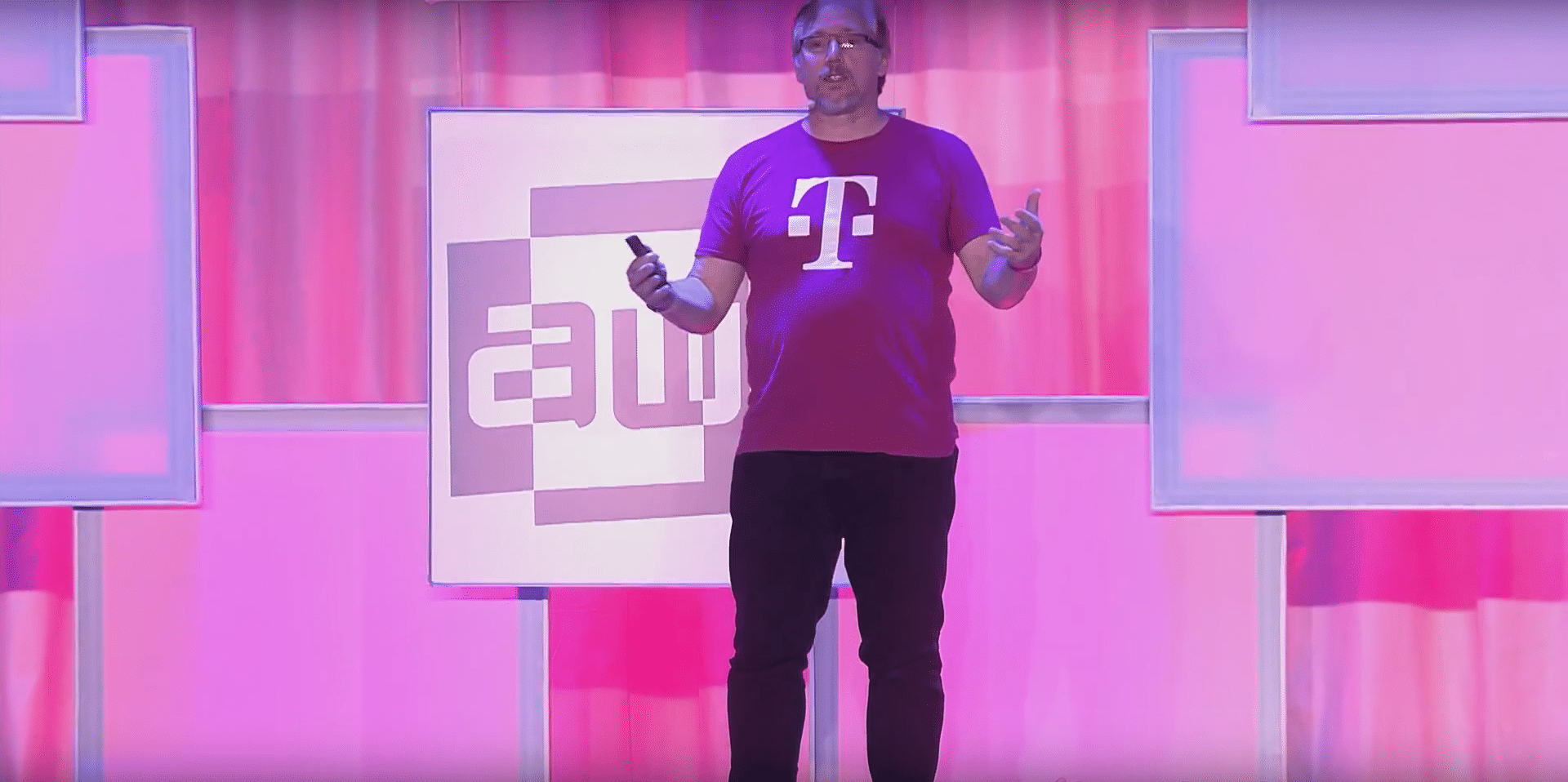
XR Talks is a weekly series that features the best presentations and educational videos from the XR universe. It includes embedded video, as well as narrative analysis and top takeaways. Speakers’ opinions are their own.
One of our favorite XR topics is how innovation will migrate from adjacent sectors. For example, computer vision requirements of autonomous vehicles will benefit AR as a byproduct. 5G and edge networks too: XR’s heavy computing and graphics will benefit from bigger pipes.
But what does that look like exactly? According to Deutsche Telekom director of immersive technologies Terry Schussler at AWE Europe (video below), 5G and edge computing will create a more efficient deployment of compute muscle and bandwidth to enable XR devices.

But first of all, what is edge computing? 5G is clear in terms of bandwidth and other benefits, but edge is less familiar. It essentially brings compute and connectivity closer to devices/nodes using a mesh network of stations placed strategically in places like campuses or 5G base stations.
“It’s not that edge is going to replace the cloud, it’s just going to move the cloud closer to the user,” said Schussler. “We control data transfer at the speed of light, so if we shorten the distance from the data center to the user, we can reduce milliseconds of latency that occur on the Internet.”
Sort of like a mesh router network but different, edge computing will be able to have several base stations that work intelligently in unison to provide the most efficient compute and connectivity transfers to nearby devices. The ultimate goal is for this to work even for moving vehicles.
“As we build 5g out, these stations can have compute data centers at their base,” said Schussler. “The distribution of that compute is going to be intelligently performed by software that allows the orchestration of where the compute should come from and be automatic.”

Where this plays out in practical terms is to power the dream of what Schussler calls “pervasive AR.” Currently AR glasses are mostly used for a single purpose, often in enterprise, with a single app loaded onto a device. Pervasive AR will give us much more functionality and optionality.
“We want to move to a more pervasive time-duration extended experience,” he said. “We will see a transition into next year where we’ll have experiences that last for one to two hours such as a sports or entertainment experience at a stadium, or watching television shows at home.”
5G and edge computing will enable this because of the reasons mentioned above, and also because pervasive computing needs more intelligence to personalize experiences for users. And that requires a level of compute that should happen off-device for optimal data delivery.
“We’re going to have to change from an app focused ecosystem to a people focused ecosystem,” he said. “That ecosystem of services is going to be forced to collaborate together to intelligently present information at the right time and the right place and in the right part of your field of view.”

Moving forward, Schussler envisions mobile devices, or any radio chip-embedded device, acting as a sort of personal area network for edge computing. That includes smartphones but also smaller connected devices or wearables that can distribute the load optimally.
“Maybe your watch acts as an LTE bridge,” he said. “These devices work together using techniques like mesh computing where they share compute capabilities of all the devices in an ecosystem, and we extend that to edge and to backhaul for more powerful experiences.”
As for the when, it’s all gated by 5G rollouts. But the bottleneck there isn’t the network rollout but the availability of devices that can connect to 5G. But Schussler believes that we’ll start to see the first 5G capable devices and handsets by the end of next year. Then it’s game on.
See the full presentation below.
For deeper XR data and intelligence, join ARtillry PRO and subscribe to the free ARtillry Weekly newsletter.
Disclosure: ARtillry has no financial stake in the companies mentioned in this post, nor received payment for its production. Disclosure and ethics policy can be seen here.
Header image credit: AWE
